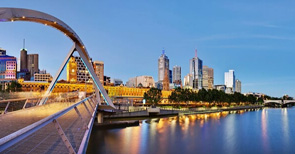-

Zoo Zurich
Authentic savanna landscape
Early 2020 saw completion of Zurich Zoo’s African savanna-themed Lewa enclosure, with large artefacts such as rocks and even trees being recreated with Oxal RM products from MC.
Authentic savanna landscape at zoo zurich with oxal rm
Zurich
Early 2020 saw completion of Zurich Zoo’s African savanna-themed Lewa enclosure. The rocks, trees and many other large artefacts in the new visitor attraction were created using MC's Nafufill RM (formerly OXAL RM) products.
Zurich Zoo was opened in 1929 and is located above the city on the Zürichberg heights in the Fluntern district. Built between 2018 and 2020, the 5.6-hectare Lewa Savanna is currently the largest facility in the entire zoo in terms of area and, after the Masoala Rainforest (2003) and the Elephant Park (2014), the third key project within the master plan for Zurich Zoo's development into a nature conservation centre.
Nature recreated in minute detail
The construction of the facility was planned and designed by L3P Architekten AG of Regensberg, Switzerland, with the sculpting work being awarded to the company Thilo Krause of Coswig, Germany. As a sculptor and set designer, Thilo Krause already has numerous major projects to his name, including “Franz Josef Land” in Vienna, Austria, the “Exotenhaus” (exotics centre) in Karlsruhe, Germany, and the new zoo landscape in Leipzig, also Germany. His speciality is large rock formations and artificial trees, reproduced in minute detail “as nature intended”. The sculpting and levelling mortars of MC's Oxal RM range are his preferred choice for such creations. They can be used to perform fine-grained sculpting work even on artificial rock surfaces exposed to static and mechanical stress, such as climbing and playground rock formations.

© MC-Bauchemie 2025
Koppie rock piles and beobab trees indistinguishable from the real thing
The outstanding feature of the new facility at Zurich Zoo is the generous open spaces that allow giraffes, rhinos and other animals to roam. There they wander between the huge “Kopje” or koppie rock piles modelled on African inselbergs that reach heights of up to 13 metres. Another artistically designed highlight is the striking baobab trees. The largest of them has a height of 19 metres, a circumference of 23 metres and a trunk diameter of 7.5 metres. Four of the five large baobabs in the Lewa Savanna have a secret inner life, for they also serve as automatic animal feeders. The keepers fill the trees with hay for the rhinos and ungulates (hoofed animals) and with pellets for the giraffes. And there is a central control room from which the rate of feed release is regulated.
Shaped with the sculpting mortars MC-RockMortar H (formerly Oxal RM-H) and Nafufill RM 10 (formerly Oxal RM-L)
The enormous artefacts were built up on metal constructions on which MC's microsilica-modified repair and sculpting mortar MC-RockMortar H (formerly Oxal RM-H) (RockMortar, Heavy-duty) was applied and moulded. MC-RockMortar H offers not only considerable strength but also impressively high carbonation resistance and the ability to withstand significant temperature swings, freeze-thaw cycling and de-icing salts. Plus: it is water-impermeable, yet open to water vapour diffusion. The final finish was provided using Nafufill RM 10 (Rock Mortar, Light-duty). Highly resistant to sulphate attack, this mortar is ideal for the delicate sculpting and modelling of lifelike rock, stone or timber textures. It offers the same kind of resistance and resilience as its companion MC-RockMortar H and is available in a wide range of colours, making it the perfect medium for both reproducing natural and creating fantasy worlds.
In the end, almost 900 tonnes of MC-RockMortar H and over 20 tonnes of Nafufill RM 10 in various shades were used in the work on the Lewa facility. The preferred colour was "Namibian red", the choice of which ensured that the artificial rock formations were virtually indistinguishable from the African originals.
-
Name
Authentic savanna landscape at zoo zurich with oxal rm
-
Country
Zurich, 2021
-
Categories
-
Products
-
News
Click here to go to our News section.
-
MC-Pedia
In our MC-Pedia you will find technical articles on various topics written exclusively by our specialists.
-
Magazine
Get our latest issues of our customer and employee magazine MC aktiv.
-
Downloads
Find all relevant datasheets of our products as well as brochures of our company, Fields of Expertise and product categories here.
-
References
Click here to get to our library with reference projects for all types of application.
-
Careers
Click here to go to MC Career.
-
Contact
Click here to go to our Contact section.




